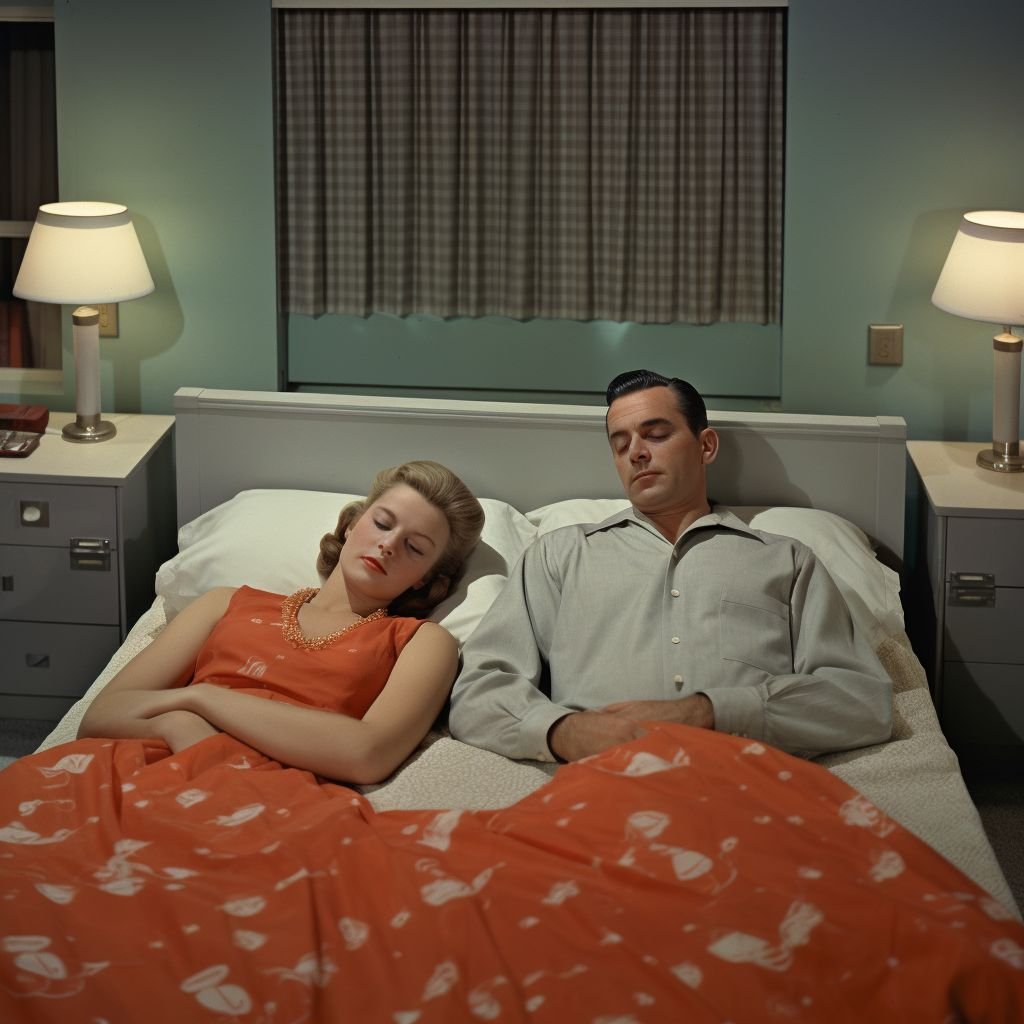In the not-so-distant past, it was a common practice for married couples to sleep in separate beds or even separate bedrooms. This seemingly peculiar arrangement may puzzle us today, as we often associate a shared bed with intimacy and togetherness in a marriage.
However, there were various historical and cultural reasons behind this practice that shed light on the evolving dynamics of marriage and societal norms.
Modesty and Social Norms
One of the primary reasons married couples slept in separate beds back in the day was a matter of modesty and adherence to societal norms. Many societies, particularly in the 18th and 19th centuries, held conservative views about physical intimacy and considered it a private matter. Sharing a bed was often seen as too revealing or improper, leading couples to maintain separate sleeping arrangements to uphold their reputation and modesty.
Health and Hygiene Concerns
Historically, there were genuine concerns about health and hygiene that influenced the practice of sleeping separately. In an era when regular bathing and clean bedding were not as prevalent as they are today, there was a fear of spreading diseases or parasites through shared bedding. Sleeping separately was viewed as a way to reduce the risk of infection and promote better health.
Social Status and Space
For the wealthier classes, sleeping separately was often a sign of privilege and social status. Affluent families could afford larger homes with multiple bedrooms, allowing couples to have their own sleeping quarters. Having separate bedrooms was seen as a symbol of prosperity and personal space, as opposed to crowding into a single bed.
Practical Reasons
Practical considerations also played a role in married couples sleeping apart. Snoring spouses, different sleep schedules, and restless sleepers could make shared beds uncomfortable. Having separate beds or bedrooms provided an opportunity for better sleep quality and reduced disturbances, which in turn contributed to overall well-being.
Victorian Morality
During the Victorian era (19th century), a period marked by strict moral codes and values, the separation of married couples during the night was further emphasized. The Victorian middle and upper classes often promoted the idea of “separate spheres” for men and women, where men worked outside the home, and women focused on domestic duties. Sleeping apart was seen as a reflection of these gender roles, reinforcing the idea that men and women had distinct areas of influence.
Changing Social Norms
As societal norms evolved throughout the 20th century, so did the practice of married couples sleeping separately. With the rise of the women’s liberation movement and changing attitudes towards intimacy, the idea of sleeping in separate beds gradually fell out of favor. The cultural shift toward valuing emotional connection and companionship in marriage over rigid gender roles and societal expectations played a significant role in this change.
Conclusion
The practice of married couples sleeping in separate beds or bedrooms, once a common occurrence in many cultures, can be attributed to a combination of modesty, health concerns, societal norms, social status, practicality, and evolving attitudes toward gender roles and intimacy. While it may seem peculiar to us today, understanding the historical context behind this practice provides valuable insights into the changing dynamics of marriage and societal norms over time. In modern times, the trend has shifted towards a more inclusive, intimate, and flexible approach to shared sleeping arrangements within marriages.
